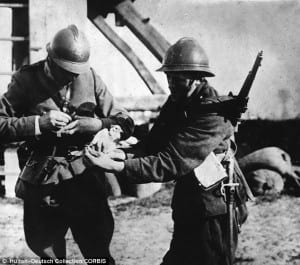 A chronic problem for spies operating in enemy territory is transmitting their findings to their home base. The problem was especially acute in World War II Europe, where German signal-detection technology, based on triangulation skills, took a deadly toll on agents.
A chronic problem for spies operating in enemy territory is transmitting their findings to their home base. The problem was especially acute in World War II Europe, where German signal-detection technology, based on triangulation skills, took a deadly toll on agents.
The British spy services delved into history for their solution: The use of carrier pigeons to speed information from agent to headquarters. The story is told in a splendidly readable account by Gordon Corera, veteran national security correspondent for the BBC.
For reasons mysterious to us Yanks, the harboring of vast flocks of carrier pigeons is a national pastime for uncountable Brits, whose flocks number into the hundreds.
During the first months of the war, Britain’s chief intelligence arm, MI6, frantically sought information of whether — or when — German forces would sweep out of Europe and invade. Spymasters delved into antiquity for the answer. Noah had pigeons on his famed ark to send reports on flood waters; Julius Caesar used birds during his conquest of Gaul. Pigeons were widely used in World War I. Why not give birds a try?
Britain had two societies of pigeon fanciers that happily supplied the needed birds. For reasons that baffle botanists, homing pigeons have the knack of flying back to their home roosts, whatever the distance.
But could they manage the 100+ miles from Europe back to England? Test flights were successful.
Thus the procedure. Six birds were gently packed into a crate that was tied to a three-and-a-half-foot parachute. Attached to each crate was an envelope with a questionnaire about German installations (and, thoughtfully, a pencil and half-a-pound of pigeon food, to be doled out a cup daily). Return messages were inserted into a small cylinder attached to each bird’s leg.
Thus was hatched Operation Columba (“columba” being the Latin scientific term for pigeon), which despite occasional glitches proved valuable for British intelligence.
The immediate concern was a possible cross-channel invasion. So the first queries dealt with concentrations of German troops and equipment depots in Belgium that could be targeted for bombing.
Two days after the initial drop in April 1940, the first pigeon returned to its roost in Kent with exactly the information sought: The location of a munitions dump, a report on a German artillery movement and a note that enemy morale “is not too good.”
The swift return, followed by many others, answered a key question: Would persons in occupied areas risk their lives to answer the pigeon-borne queries? The response was overwhelming: Many citizens of both Belgium and France were disgusted with their leaders’ swift capitulation to the Germans, and wished to demonstrate their personal bravery.
In many instances, the pigeon messages were dispatched by a single individual — for instance, a farmer who found a parachute while making his morning rounds and scrawled what he knew before tossing the bird into the air.
There were notable examples of how Operation Columba inspired the formation of ad hoc resistance groups. Mr. Corera tells of a farmer who found a pigeon and decided to take it (hidden in a sack of potatoes) to a family he knew were patriots.
The three brothers and two sisters of the Debaillies family, although they hated the Germans, were divided. Two men felt the “risk was too great.” But they decided to contact a priest, Father Joseph Raskin, who had worked underground against the Germans in World War I, (being jailed twice) and was ready to resist again.
Raskin and friends went to work surveying German military activities in their area. A key item of information was that coastal defenses were being strengthened — a signal to British intelligence that the Germans were now preparing to defend against an invasion, rather than launch one of their own.
Raskin used a magnifying glass to ensure he crammed as much detail as possible onto two thin sheets of rice paper. His product is reproduced in the book. Once can only speculate the excitement with which intel analysts pored over the pages.
One page bore a symbol, a circle with a curley L sitting on a V, with “Our Shield!” scrawled alongside, a signal to watch for subsequent messages. The cell took the name “Leopold Vindictive” and send back uncountable messages.
The Germans, unsurprisingly, found enough pigeons to deduce what was going on and launched counter-measures: Falcons, a pigeon’s worst enemy. They also scattered their own pigeons, hoping to entrap resistance fighters.
Nonetheless, Operation Columba continued through D-Day and beyond, with pigeon-borne serving as messengers. There was a deadly price, of course: Of the 16,000 pigeons sent out, only 1 of 10 made it back alive. Perhaps a memorial statue is in order?
About Pigeon Patrol:
Pigeon Patrol Products & Services is the leading manufacturer and distributor of bird deterrent (control) products in Canada. Pigeon Patrol products have solved pest bird problems in industrial, commercial, and residential settings since 2000, by using safe and humane bird deterrents with only bird and animal friendly solutions. At Pigeon Patrol, we manufacture and offer a variety of bird deterrents, ranging from Ultra-flex Bird Spikes with UV protection, Bird Netting, 4-S Gel and the best Ultrasonic and audible sound devices on the market today.
Voted Best Canadian wholesaler for Bird Deterrent products four years in a row.
Contact Info: 1- 877– 4– NO-BIRD (www.pigeonpatrol.ca)
